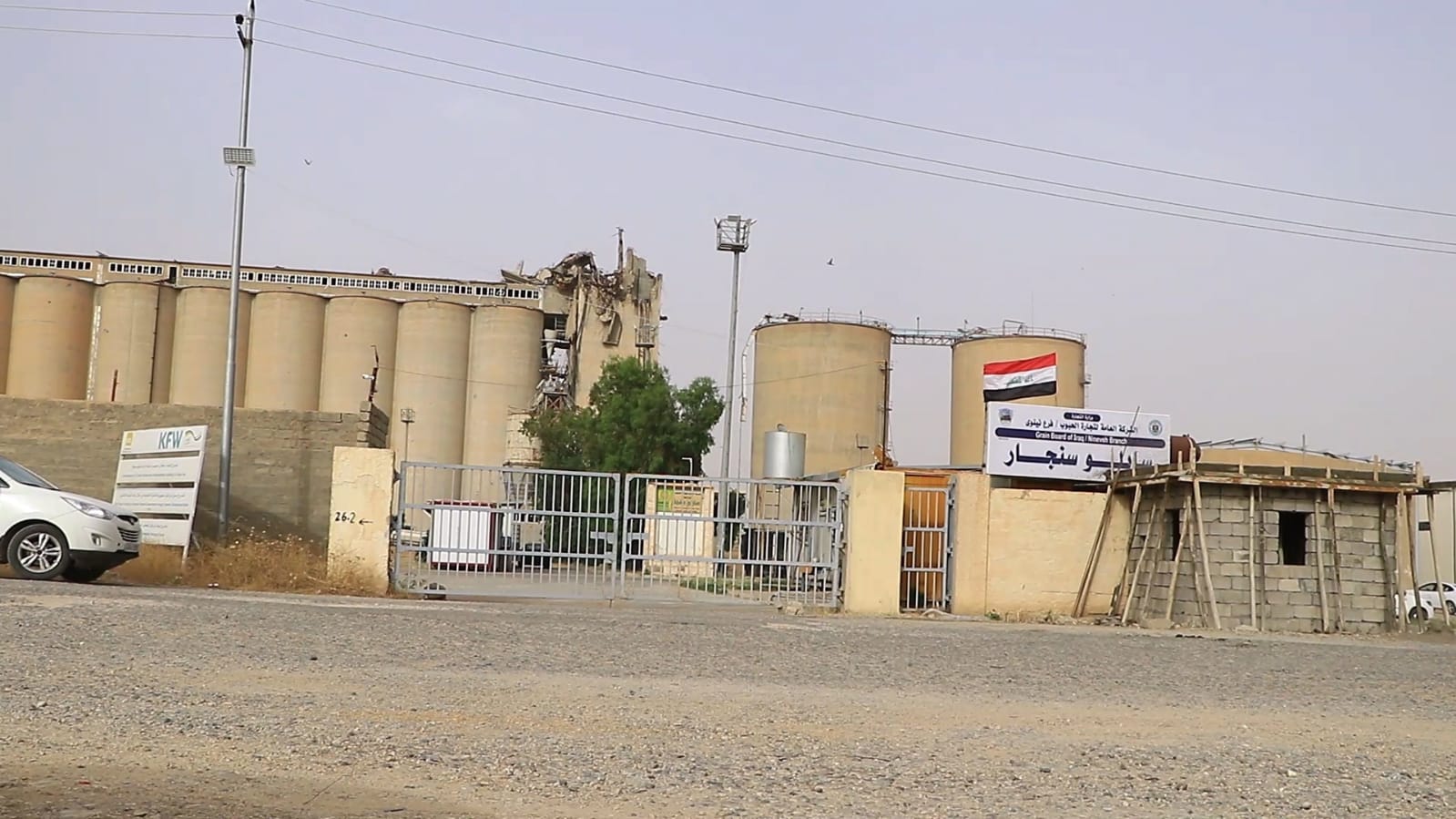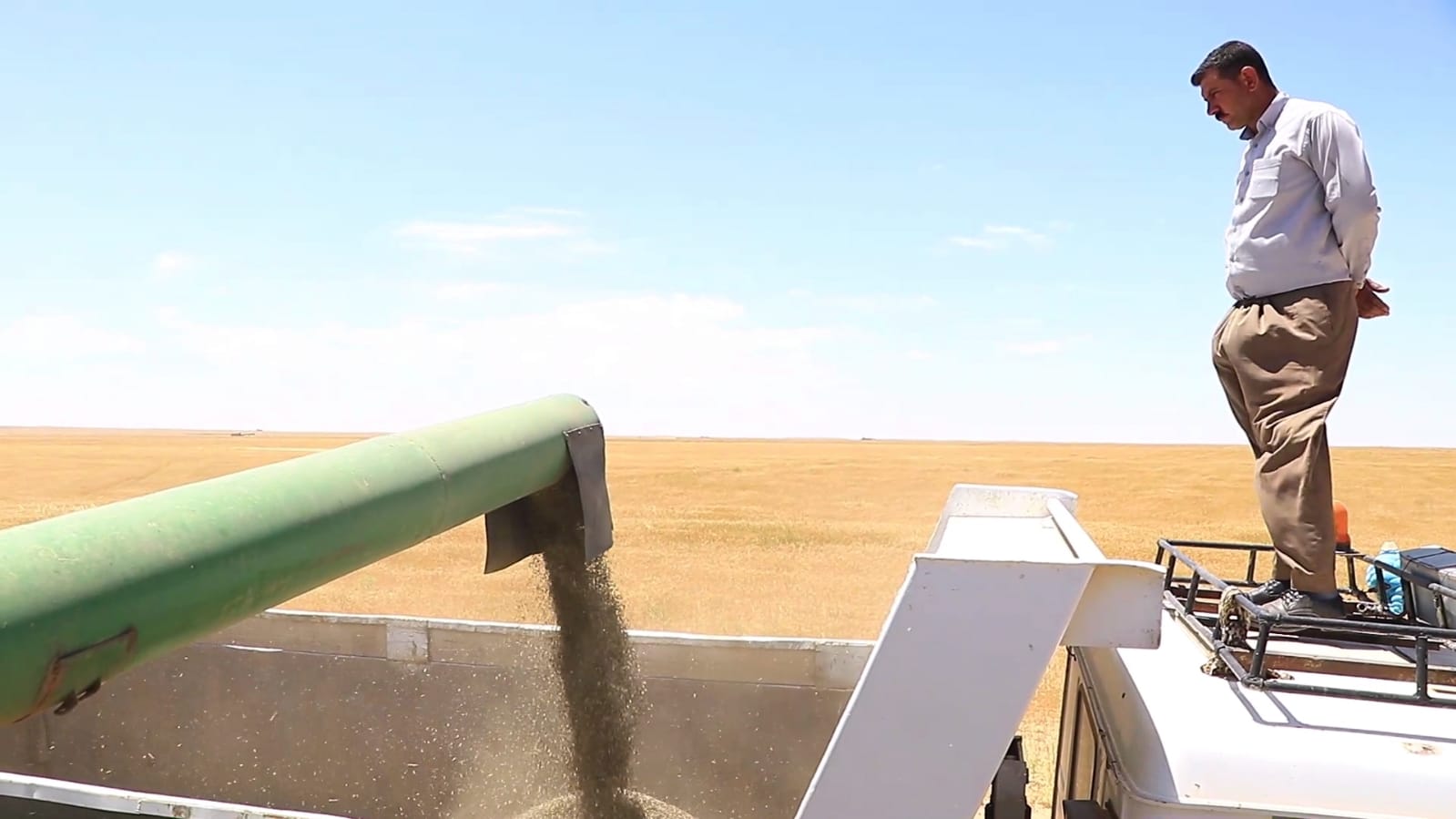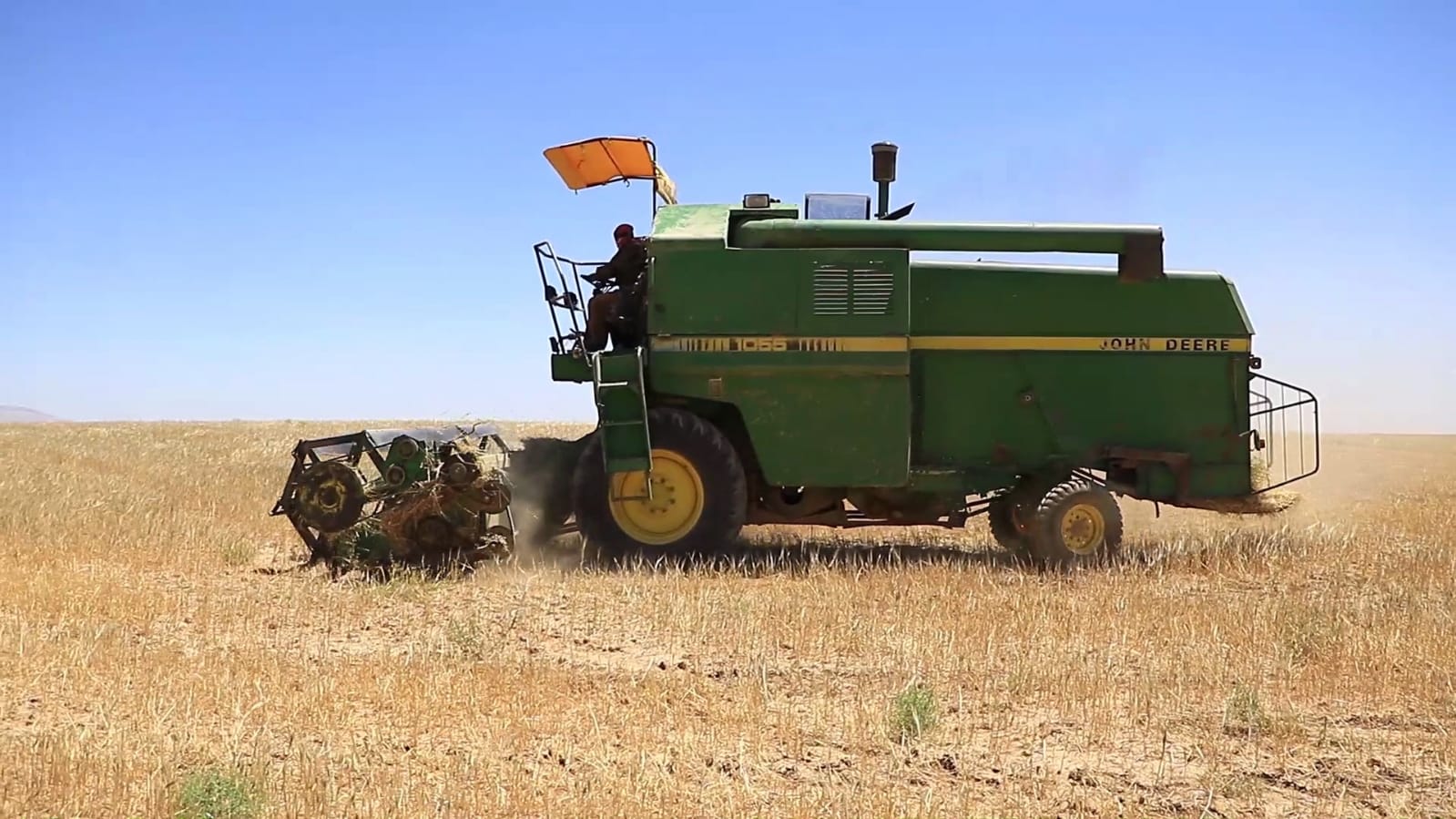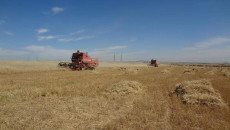While the production of Sinjar (Shingal) farmers is expected to reach 40,000 tons, the capacity of the district silo warehouse does not exceed 22,000 tons due to the damage it sustained during the war against the Islamic State of Iraq and the Levant (ISIS).
In August 2014, ISIS militants took control of Sinjar, and during the confrontations and military operations to capture the district, parts of the silo, which had a capacity of 65,000 tons of the wheat crop, were damaged and has not been rehabilitated up to the present.
Three weeks ago, the harvest season began in Sinjar.
Khalaf Hamo, 61, a farmer from Sinjar, said that the farmers hope that the government will receive their crops. “This year I spent large amounts of money, I finished harvesting and produced about 25 tons of wheat.”
“This year we focused on irrigating the wheat crop ourselves in times of drought, but in general, the percentage of rain was good compared to the last three years.”
Shingal is home to more than 40,000 hectares of agricultural land and most of that area relies on rainwater, while the amount of rainfall in Iraq has decreased significantly for the last two years as water scarcity has become a challenge for several countries due to climate change.

Aftermath of the destruction of Sinjar Silo, Nineveh, June 2023. Laith Hussein
According to the statistics of the Sinjar Agriculture Department, the area of wheat and barley cultivated land reached 36,000 hectares.
Ghazi Elias, director of the state-owned Sinjar silo, told KirkukNow, “We started receiving the wheat crop from the farmers on May 23. So far, we have received about 15,000 tons. We expect the district’s production to reach about 40,000 tons, while the silo’s capacity is limited, not exceeding 22,000 tons.
According to agricultural experts in Sinjar, this year's wheat production was the best among the previous three years.
The Sinjar administration is planning to follow the system of transporting wheat to the silos of Ninewa and according to Ghazi Elias, this step will begin within the next few days.

A farmer looking at his production of this wheat crop after harvesting it, Nineveh, June 2023. Laith Hussein
The government receives wheat from farmers at an amount ranging between 500,000-850,000 Iraqi dinars IQD per ton ($340-580), depending on the quality of the wheat.
Muhsin Muhammad, General Manager of the state-owned Grain Marketing Company in Nineveh Province, told KirkukNow, “We have completed preparations to receive wheat from all the farmers of the province, including wheat produced in western Nineveh, such as Sinjar, Tal Afar and Ba’aj.”
“These areas are of great importance, especially Sinjar wheat because its quality is high, and citizens prefer flour produced from Sinjar wheat, which is why we pay special attention to it.”
Iraqi farmers depend on the state in the production of grains, a policy criticized by experts as for years grains were stored in silos in vain and funds not allocated to pay farmers planning to sell their grains to traders and private silos as the demand is higher on wheat following Russia invasion of Ukraine, Europe's food basket.
The Trade Ministry stores or buys produce from farmers and distributes it to mills in order to provide state-subsidized food rations and subsidized floor into markets as bread and rice make the main dish of the Iraqi cuisine.
The Agriculture Ministry supports farmers by providing harvesting tools, seeds, fertilizers and pesticides at a subsidized rate or for free while farms call for direct involvement of the state following scarcity of water, frequent waves of dust storms and unaffordable cost of other necessities.
Sinjar district is one of the disputed areas between the Iraqi federal government and the Kurdistan Regional Government KRG. It is located within Nineveh Governorate and is inhabited by a majority of Yazidis (Ezidis). On August 3, 2014, ISIS took control of the district and thousands of civilians were killed, kidnapped and displaced before it was restored on November 13, 2015.






